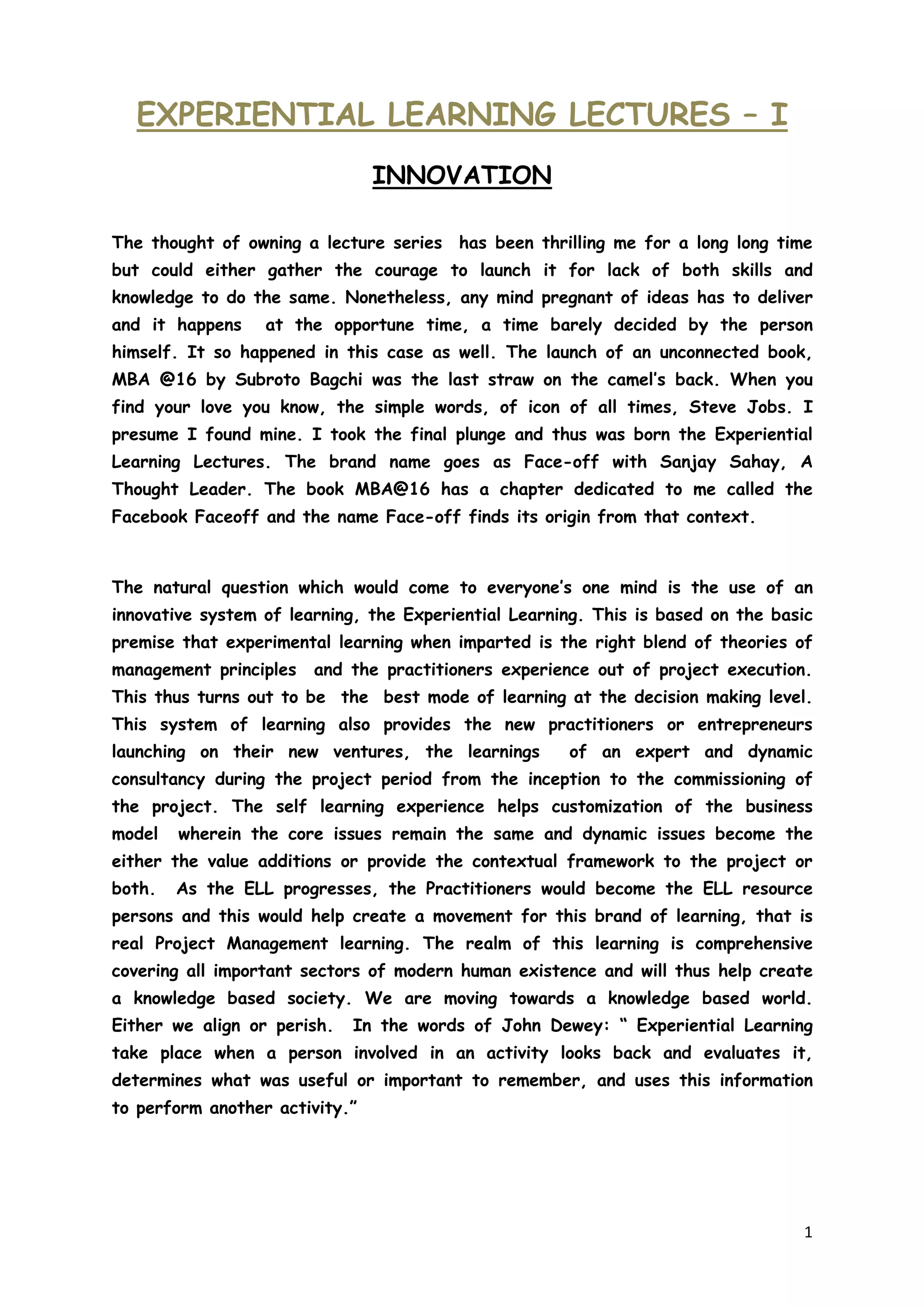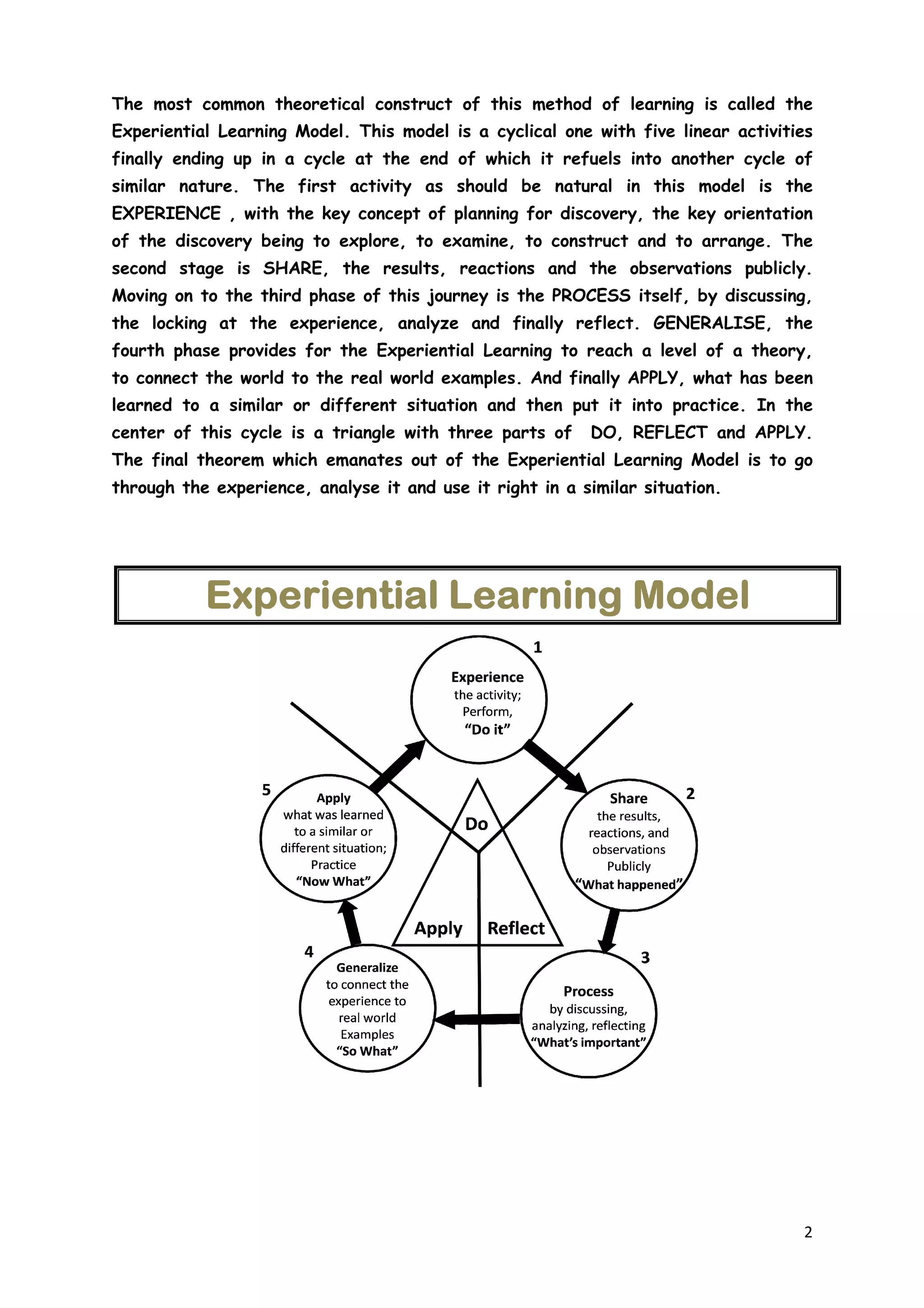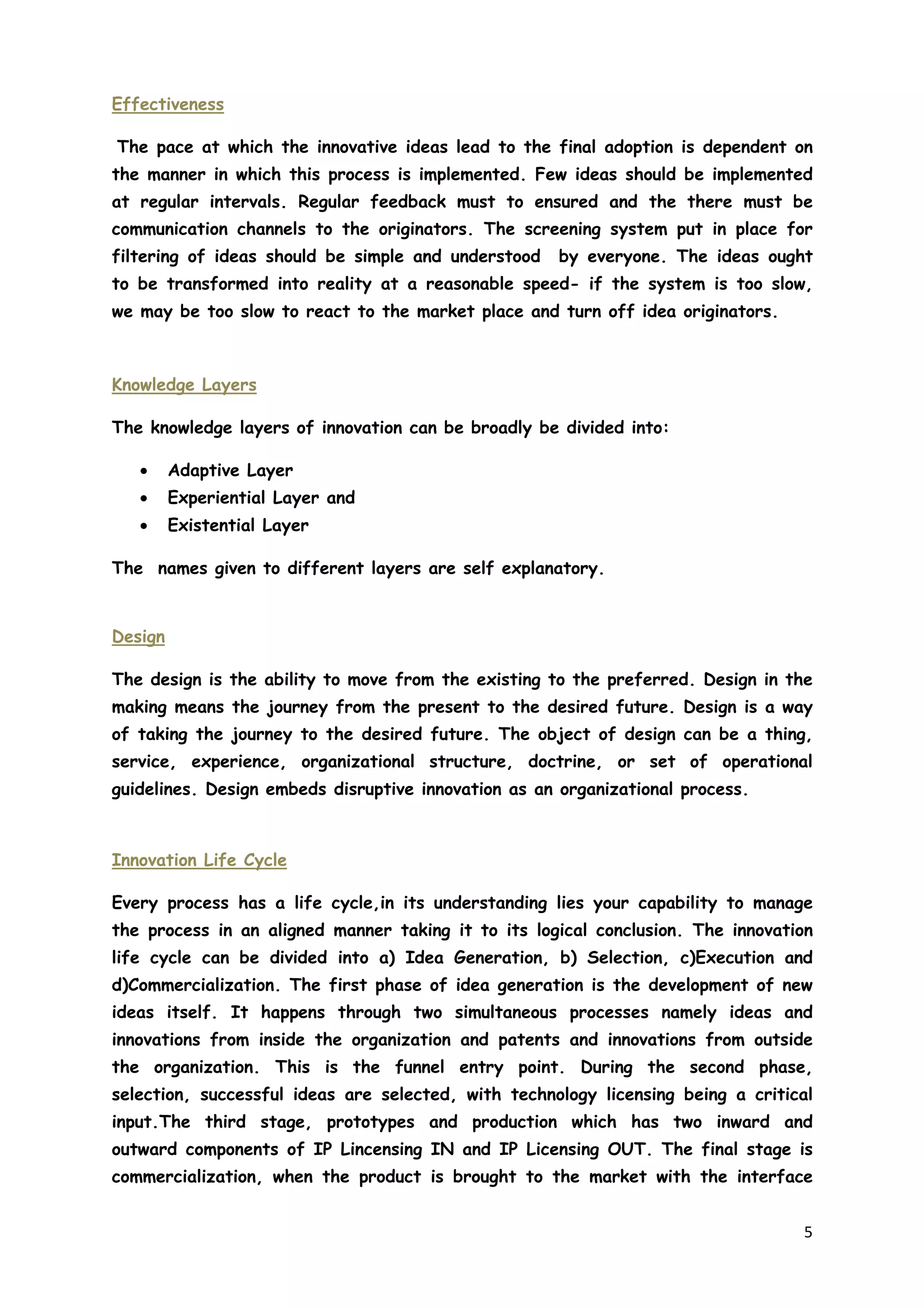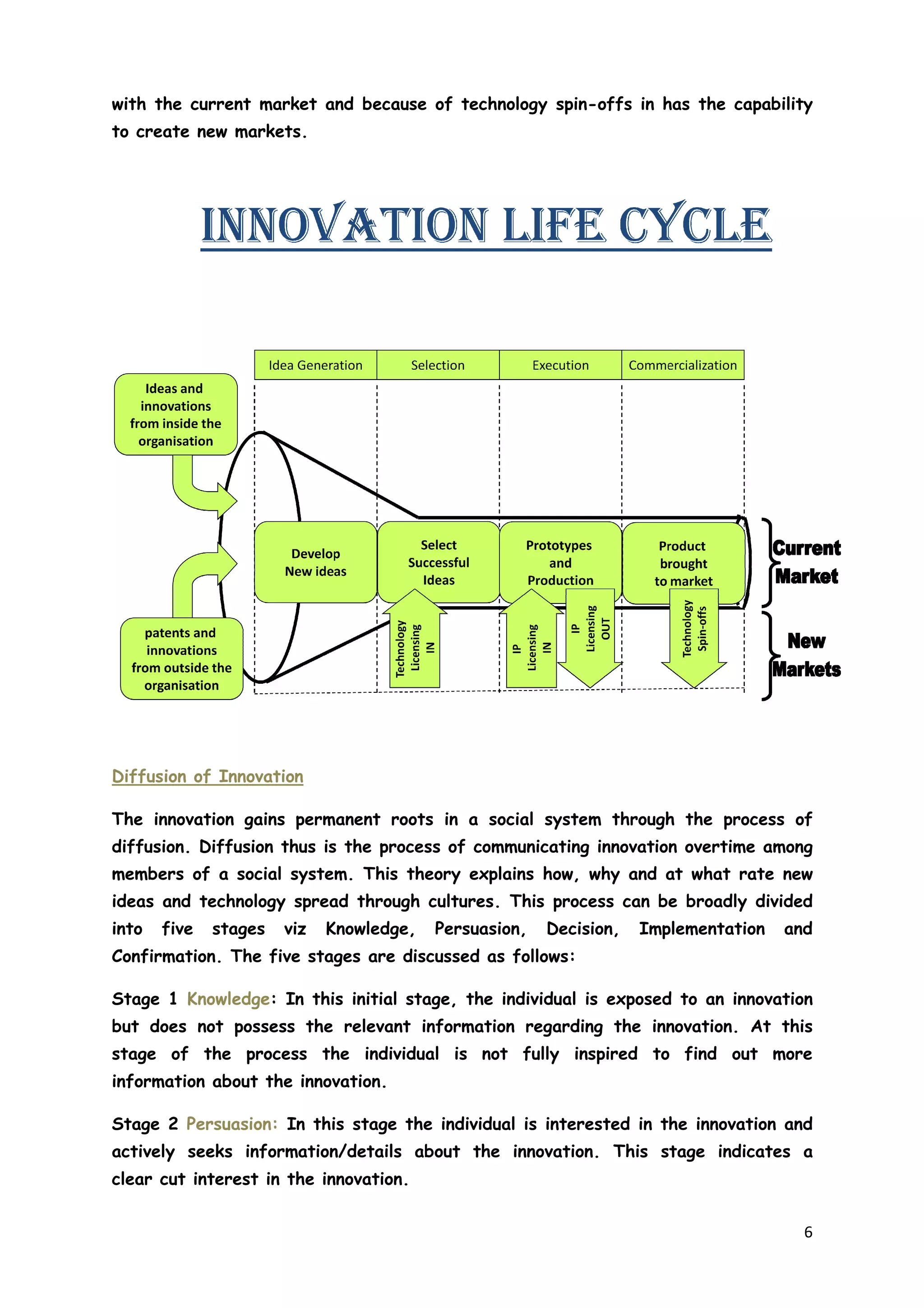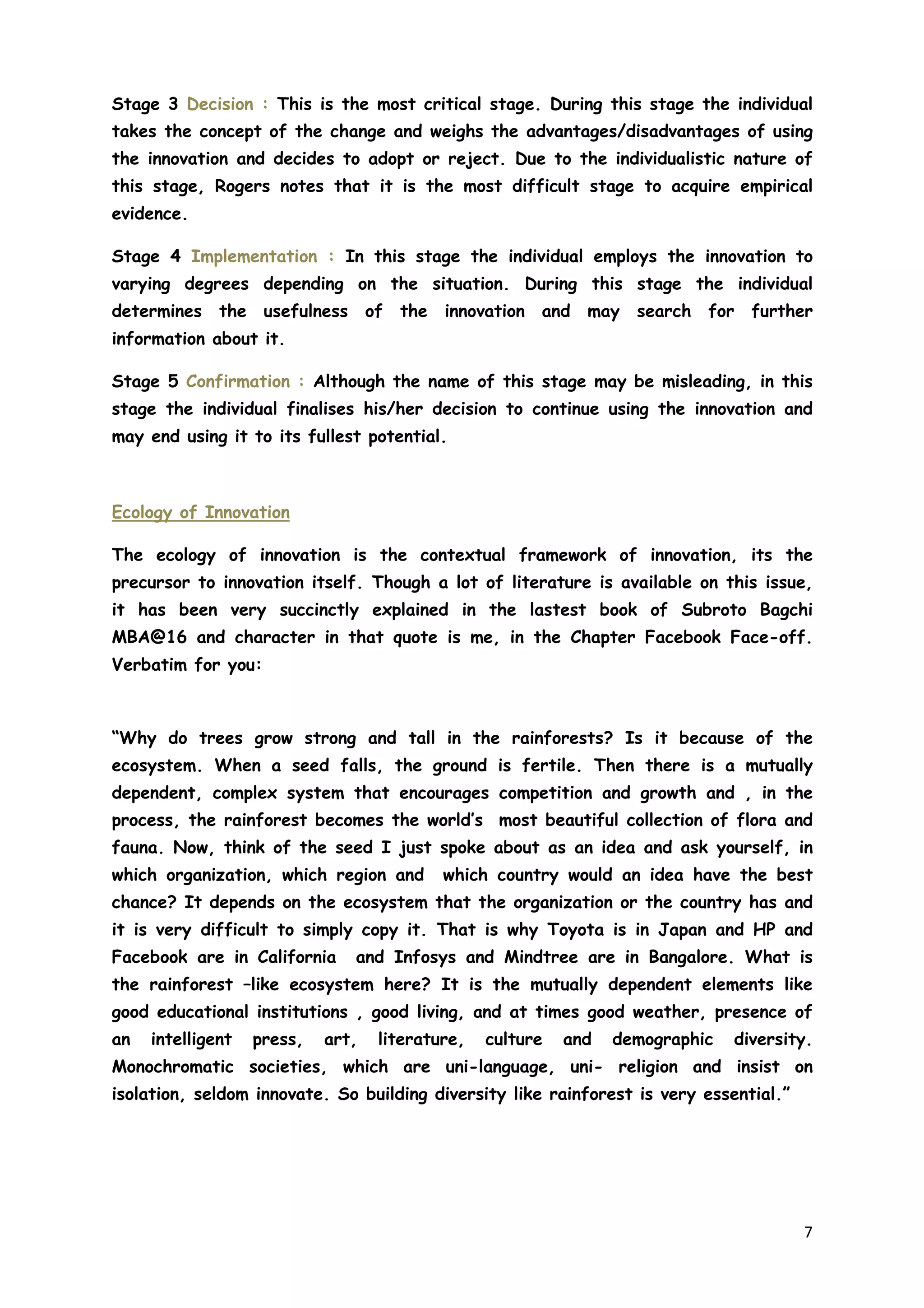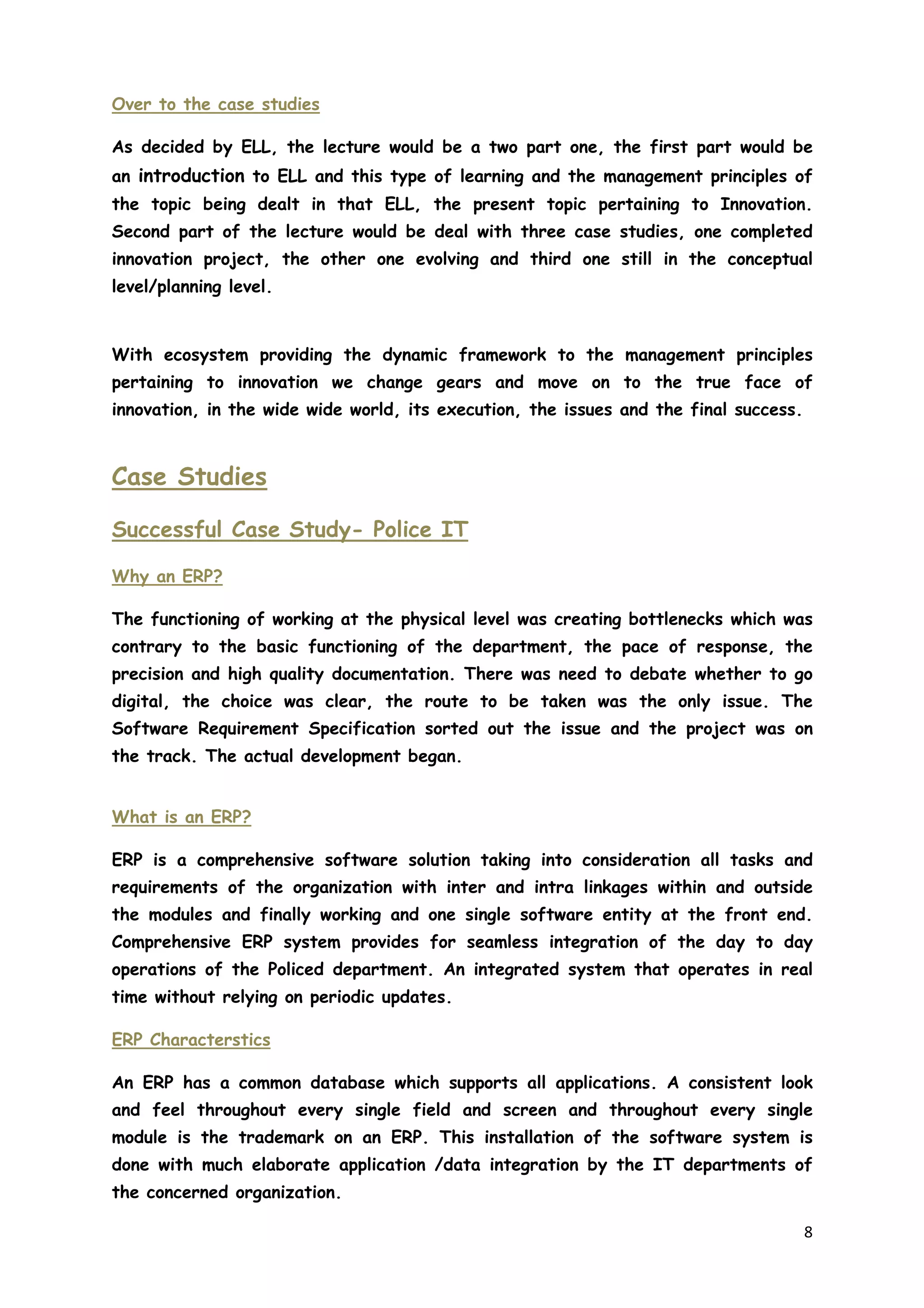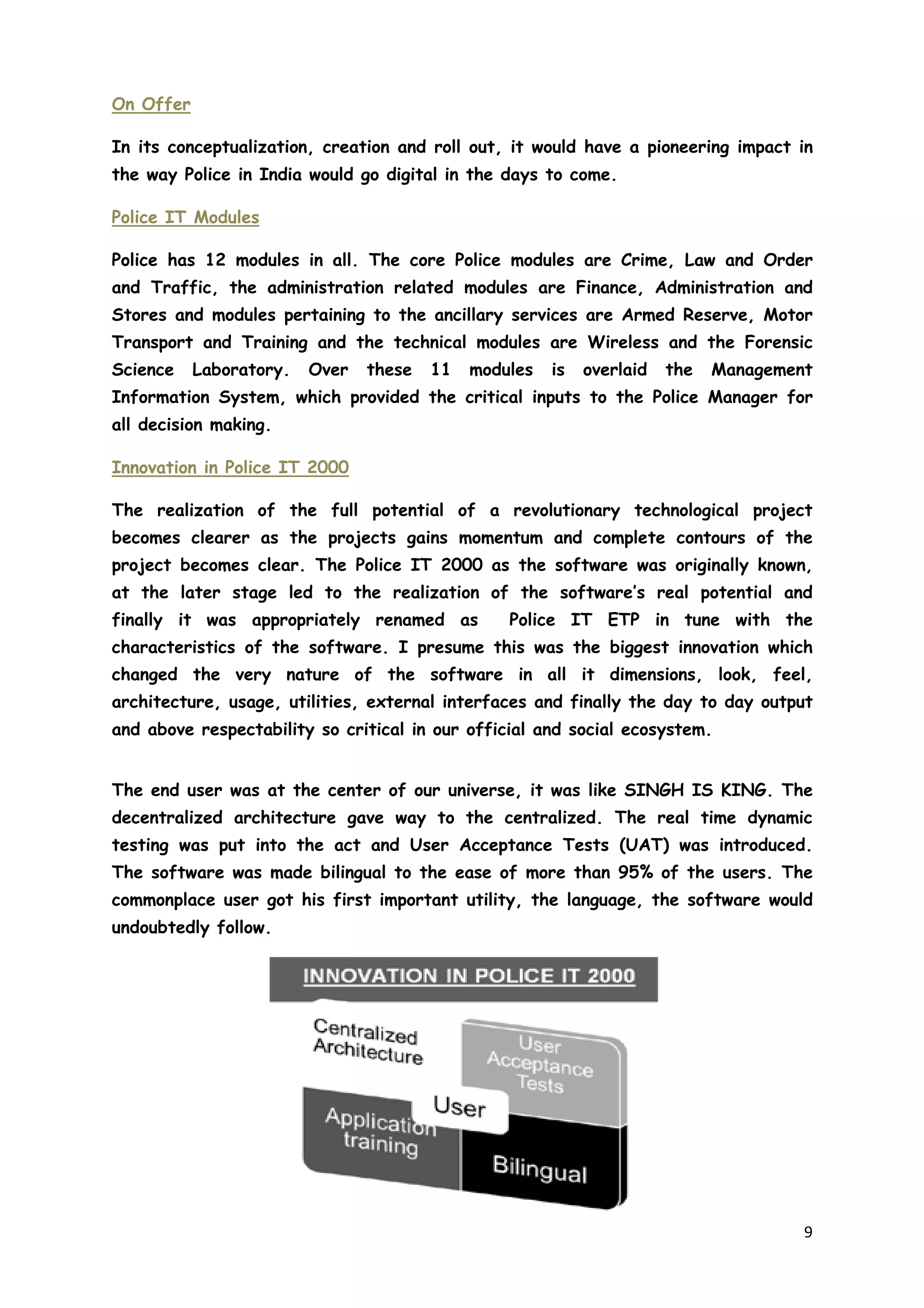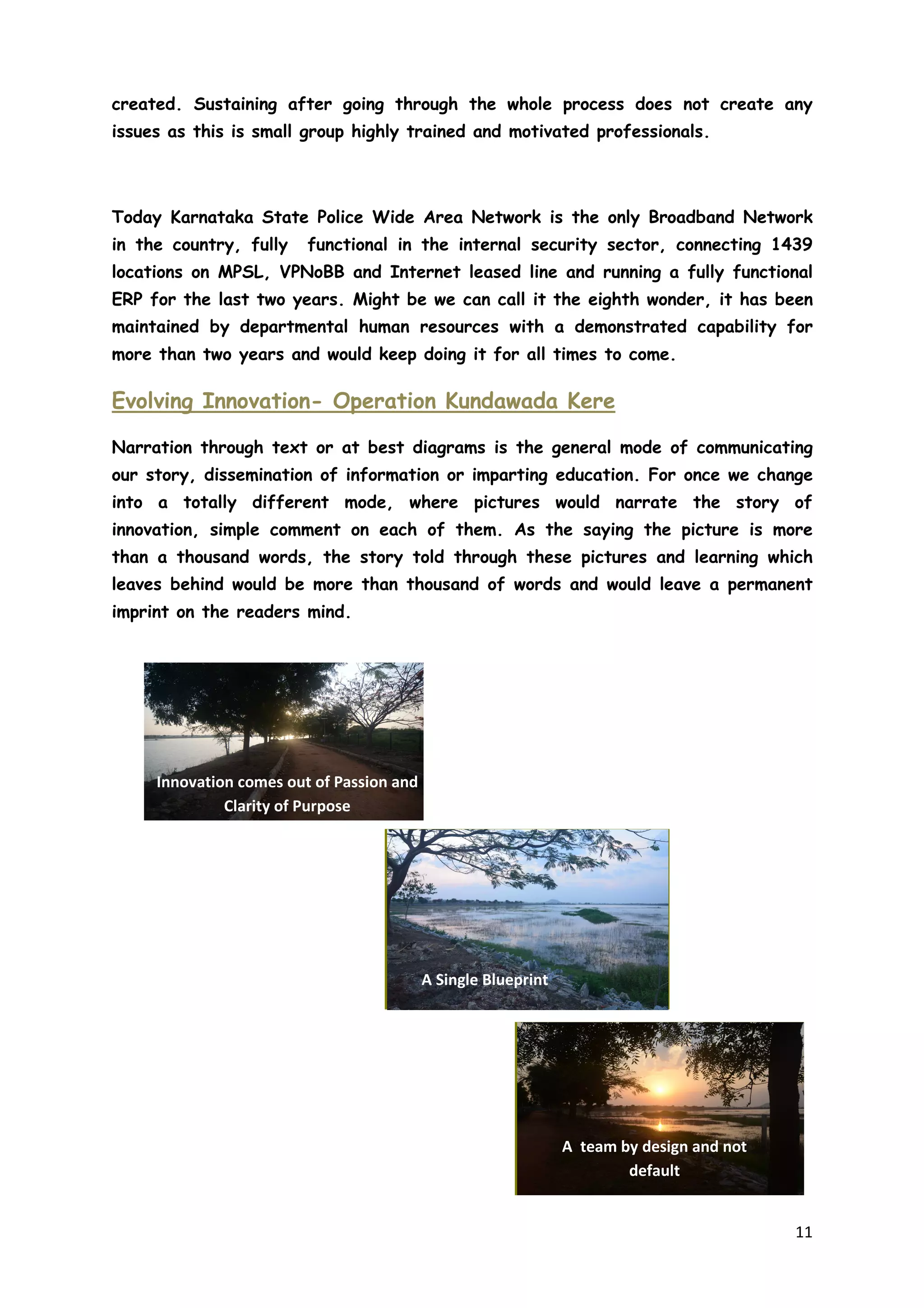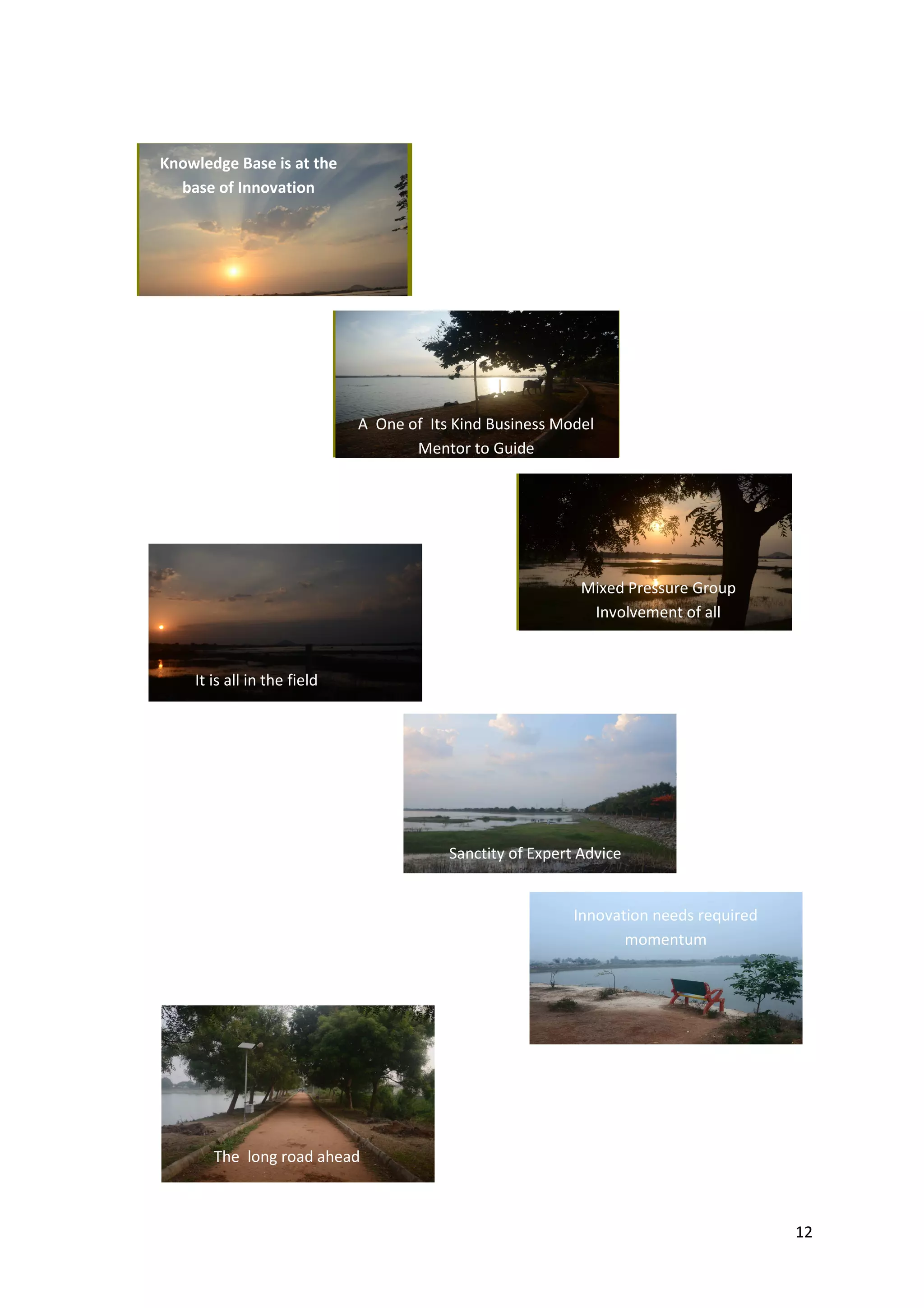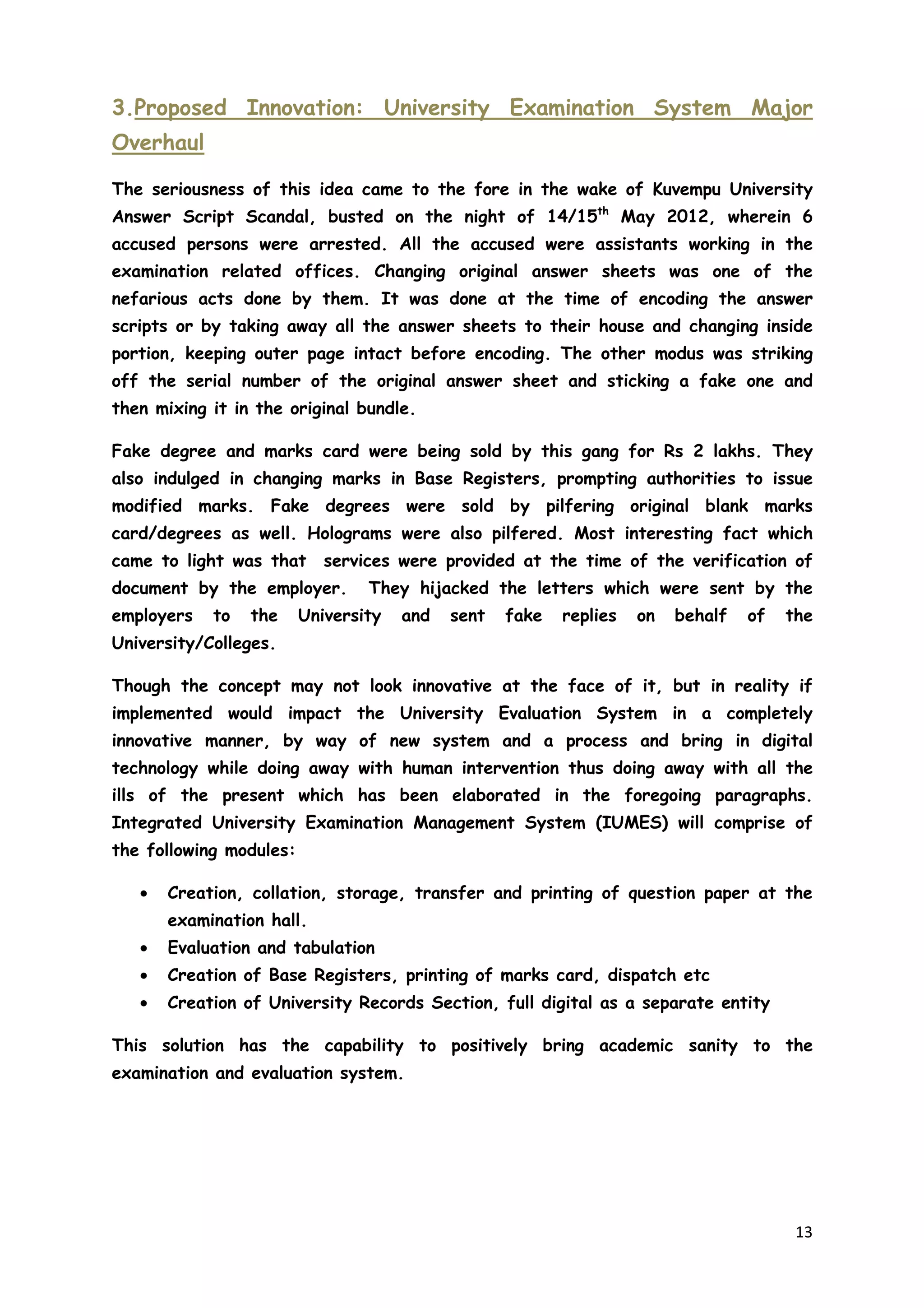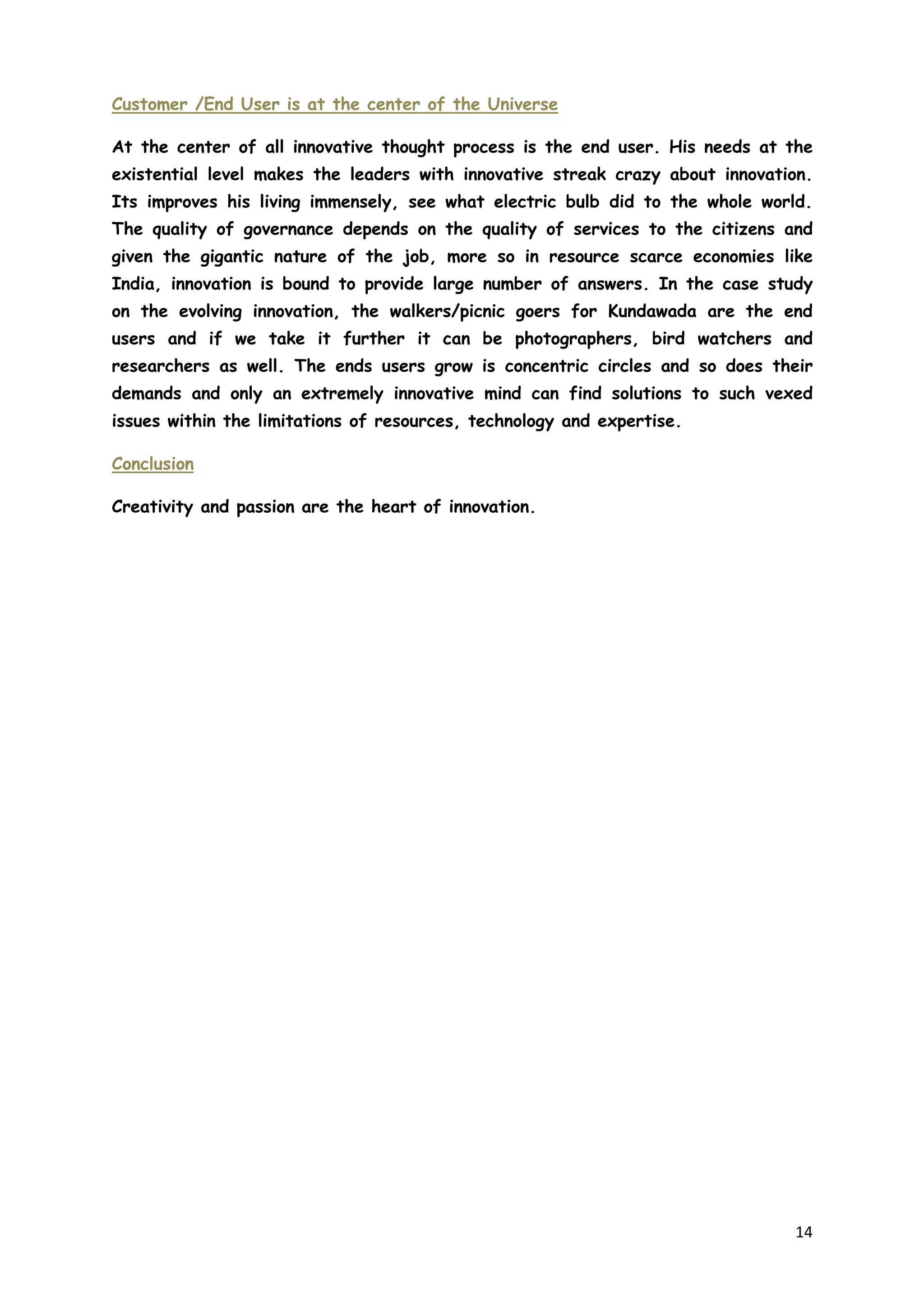This document discusses experiential learning and innovation. It begins by introducing experiential learning lectures (ELL) and the experiential learning model, which is a cyclical five-stage process of experience, sharing, processing, generalizing, and applying. It then discusses principles of innovation like risk-taking and satisfying customer needs. The document outlines the innovation process as a series of funnels where few ideas become innovations. It discusses factors that influence the effectiveness and diffusion of innovations like implementation pace and the five stages of diffusion. It emphasizes the importance of an "ecology of innovation" like a diversity of ideas, institutions, culture and demographics for new ideas to flourish.
